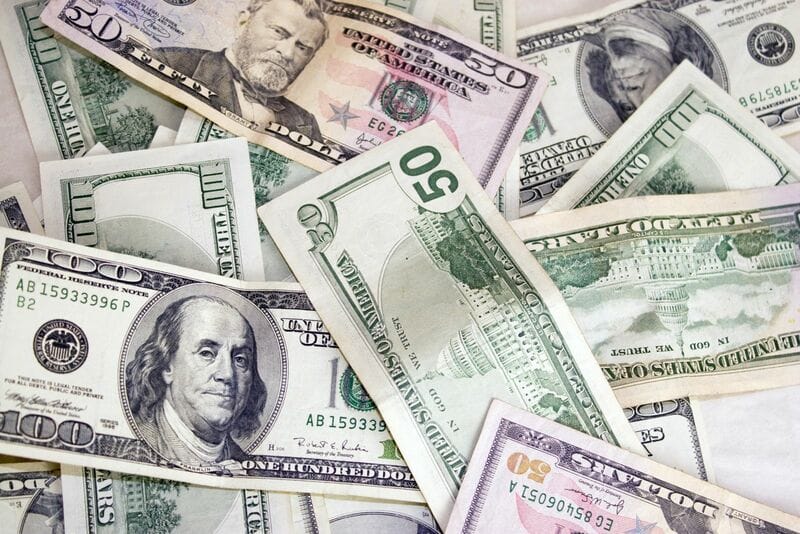
The dollar index (DXY00) on Thursday fell by -0.52% and posted a 6-week low. The dollar was undercut after Fed Chair Powell said that the Fed is “not far” from the confidence needed to cut rates. The dollar was also undercut by Thursday’s weak productivity and trade deficit reports. Also, strength in stocks Thursday reduced liquidity demand for the dollar.
U.S. weekly initial unemployment claims were unchanged at 217,000, close to expectations of 216,000.
The U.S. Jan trade deficit increased to -$67.4 billion, wider than expectations of -$63.3 billion and the largest deficit in 9 months, a negative factor for Q1 GDP.
U.S. Q4 nonfarm productivity was unrevised at 3.2%, better than expectations for a downward revision to 3.1%. Q4 unit labor costs were unexpectedly revised lower to 0.4% from the previously reported 0.5%, weaker than expectations of an increase to 0.7%.
U.S. Jan consumer credit rose +$19.495 billion, stronger than expectations of +$10.000 billion.
Fed comments Thursday were slightly hawkish and supportive of the dollar. Fed Governor Bowman said monetary policy appears "appropriately calibrated" to lower inflation and that it is too soon to begin cutting interest rates. Also, Cleveland Fed President Mester said, "A bigger mistake would be to move interest rates down too soon or too quickly without sufficient evidence that inflation is on a sustainable and timely path back to 2%."
The markets are discounting the chances for a -25 bp rate cut at 5% for the March 19-20 FOMC meeting and 28% for the following meeting on April 30-May 1.
EUR/USD (^EURUSD) on Thursday rose by +0.42% and posted a 7-week high. The euro on Thursday recovered from early losses and rallied after comments from ECB President Lagarde dampened speculation of imminent ECB rate cuts when she said she and her colleagues aren't "sufficiently confident" at present to commence monetary easing. The euro on Thursday initially moved lower after German Jan factory orders posted their biggest decline in 3-3/4 years and then extended losses after the ECB cut its 2024 Eurozone GDP and inflation forecasts.
German Jan factory orders fell -11.3% m/m, weaker than expectations of -6.0% m/m and the biggest decline in 3-3/4 years.
The ECB, as expected, kept the deposit facility rate unchanged at 4.00% and said that maintaining this level of borrowing costs for "sufficiently long" will make a "substantial contribution" to returning consumer price growth to its 2% goal.
The ECB cut its Eurozone 2024 GDP forecast to 0.6% from a December forecast of 0.8% and cut its Eurozone 2024 inflation forecast to 2.3% from a December forecast of 2.7%.
ECB President Lagarde said the Eurozone economy remains weak and that wage growth is starting to moderate. She added that there's a definite slowdown in consumer prices but that she and her colleagues aren't "sufficiently confident" at present to commence monetary easing.
Swaps are pricing in the chances for a -25 bp rate cut by the ECB at 14% for its next meeting on April 11 and 93% for the following meeting on June 6.
USD/JPY (^USDJPY) on Thursday fell by -0.90%. The yen rallied to a 1-month high against the dollar Thursday after strong Japanese wage news and hawkish BOJ comments bolstered speculation the BOJ may exit its negative interest rate policy as soon as this month. A decline in T-note yields Thursday also gave the yen a boost.
Japan Jan labor cash earnings rose +2.0% y/y, stronger than expectations of +1.2% y/y and the biggest increase in 7 months.
Hawkish comments Thursday from BOJ Board member Nakagawa boosted the yen when he said, "There are signs of a clear shift in businesses' behavior for setting wages, and Japan's economy and inflation are steadily making progress toward meeting the stable 2% inflation target."
Swaps are pricing in the chances for a +10 bp rate increase by the BOJ at 78% for its next meeting on March 19 and 85% for the following meeting on April 26.
April gold (GCJ4) on Thursday closed up +7.0 (+0.32%), and May silver (SIK24) closed up +0.085 (+0.35%). Precious metals settled moderately higher on Thursday, with April gold posting a contract high and nearest-futures (H24) gold posting an all-time high. Also, silver rose to a 2-1/4 month high. Thursday’s fall in the dollar index to a 1-month low was bullish for metals. Also, Thursday's slump in U.S. and German bond yields supported precious metals. In addition, speculation that the Fed and ECB will soon pivot to cutting interest rates has sparked the buying of gold as a store of value. Finally, heightened geopolitical risks in the Middle East have underpinned safe-haven demand for precious metals.
On the negative side, Thursday’s rally in the S&P 500 to a record high reduced some safe-haven demand for precious metals. Also, funds continue to liquidate their long gold positions after long gold holdings in ETFs fell to a 4-year low on Tuesday. Gains in silver were limited after German Jan factory orders posted their steepest decline in 3-3/4 years, a negative factor for industrial metals demand.
On the date of publication, Rich Asplund did not have (either directly or indirectly) positions in any of the securities mentioned in this article. All information and data in this article is solely for informational purposes. For more information please view the Barchart Disclosure Policy here.






